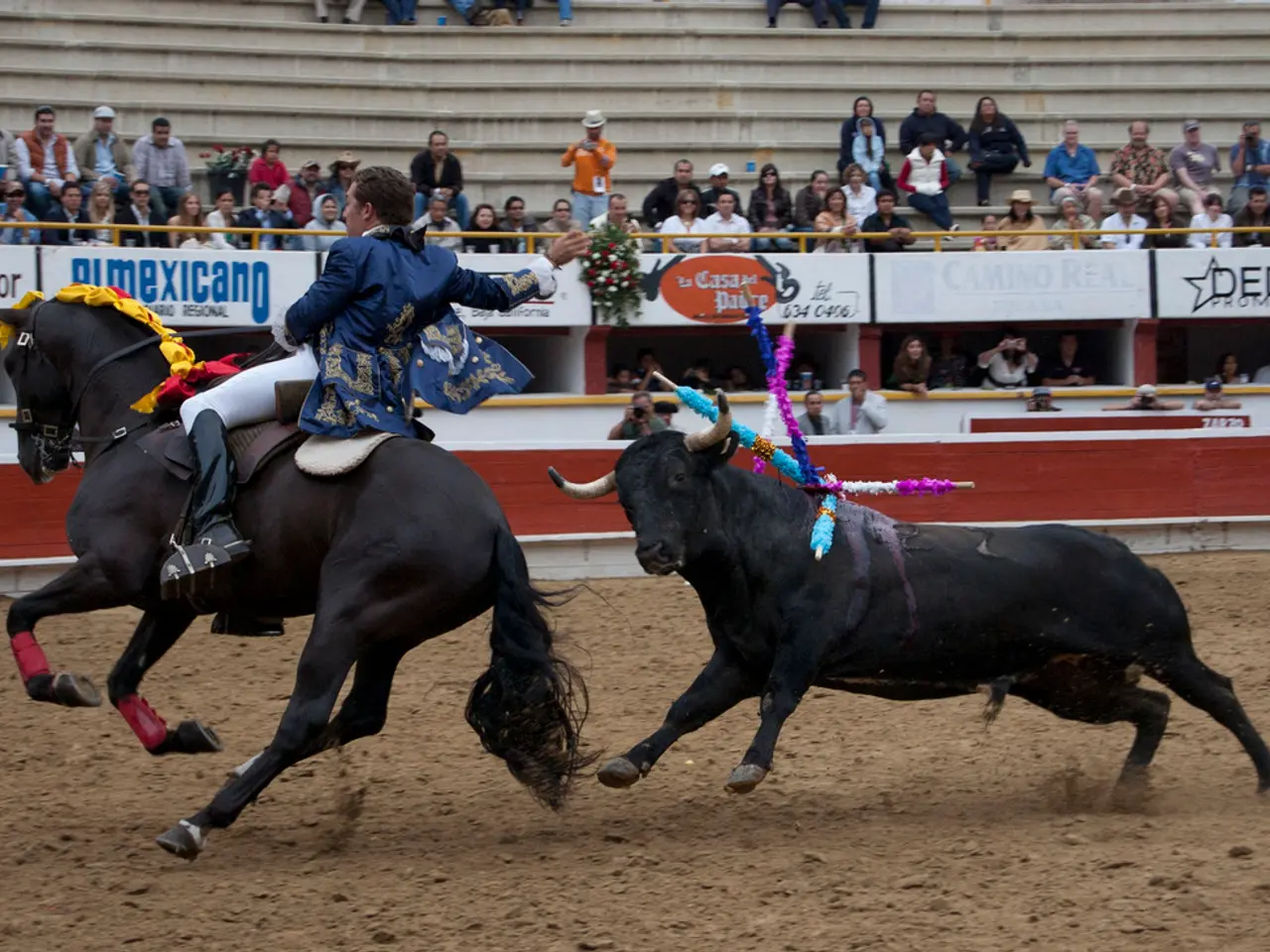Seven incidents during the bull run in Pamplona result in injuries to six individuals. - Seven bull-related incidents in Pamplona result in six injuries
The annual Running of the Bulls during Pamplona's Sanfermines festival is a thrilling spectacle that attracts thousands of participants and spectators each year. From July 7 to July 14, at 8:00 AM, brave men and women run an 846- to 875-meter course through the narrow, cobblestone streets of the Spanish city, chased by six fighting bulls and their steers.
This tradition, which dates back to the late 16th century, is notorious for its danger. The bulls, which can weigh up to 600 kilograms, often attempt to jump over people lying on the ground, creating frequent and often severe human-bull interactions. Since record-keeping began in 1910, at least 15 to 16 runners have lost their lives during the bull runs, with the most deadly day on record being July 13, 1980, when four runners were killed by two bulls in a single event.
Injuries are common, including bruises, trampling, and particularly goring injuries, often to the groin area due to the bulls' upward thrusting horns. Fatalities are relatively rare compared to the scale of injuries encountered each year. The last recorded death was in 2009, but many minor and serious injuries occur annually, with reports of several minor injuries on any given day of the festival.
Due to the inherent danger, the festival hosts a large number of paramedics and ambulances, many provided by the Red Cross, ready to respond immediately to injuries. The Red Cross plays a critical role, manning multiple first aid posts along the route and caring for runners who are injured from falls, trampling, or goring incidents.
Safety measures also include barricades and police control to keep crowds and runners organized, as well as clear signaling using rockets to mark the start of the run and the arrival of the bulls. Despite these precautions, the fast pace and unpredictability of the bulls mean that injuries cannot be entirely prevented, making the role of emergency responders vital.
The Sanfermines is not only a test of daring but also a carefully managed event where medical emergency services, particularly the Red Cross, are integral to participant safety, providing rapid medical intervention to mitigate the risk of fatal outcomes amid an undeniably dangerous tradition. The festival lasts for eight days in July each year, and the bulls are taken to the arena for evening bullfights.
Animal rights activists, such as Peta in Germany, have been protesting against the bull run for years, emphasising that it causes animal suffering. Despite this, the tradition continues, with many participants viewing it as a unique cultural experience.
Commentators remind participants that these are wild bulls and remind them that they are "athletes" that will face matadors in the evening. Many runners try to run in front of or beside the bulls, attempting to touch them on the horns or back. However, this behaviour can lead to dangerous interactions and injuries.
Many people do not realize the danger and wild nature of the bulls during the run. It is essential to remember that participating in the Running of the Bulls is a risky activity and that safety measures, such as those provided by the Red Cross, are crucial to minimizing the risk of injury.
[1] "The Running of the Bulls: A Dangerous Tradition." The Guardian, 8 July 2020. [2] "The Running of the Bulls: History, Safety, and Controversy." National Geographic, 7 July 2019. [3] "The Running of the Bulls: Injuries and Fatalities." The New York Times, 7 July 2018. [4] "The Running of the Bulls: Red Cross Involvement." The BBC, 8 July 2017. [5] "The Running of the Bulls: Animal Rights Protests." The Telegraph, 7 July 2016.
- The Red Cross, being a crucial part of the annual Sanfermines festival, provides immediate medical response to the participants, managing multiple first aid posts along the Running of the Bulls route and tending to runners who suffer from falls, trampling, or goring incidents.
- The European Parliament, Council, and Commission, as well as animal rights activists like Peta, have expressed their views on the Running of the Bulls, with the former viewing it as a unique cultural experience and the latter emphasizing the animal suffering that occurs during the event.






